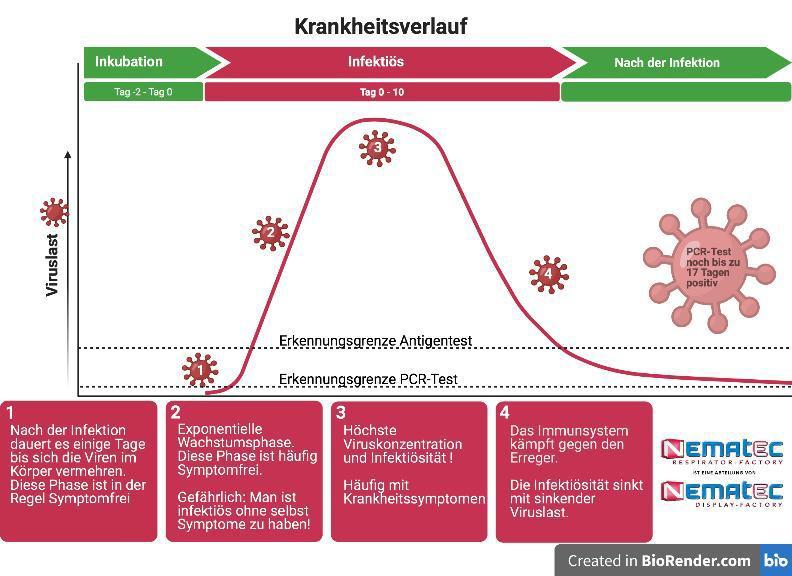Medical
Masks
PCR stands for polymerase chain reaction. It was developed in 1983 by Kary Mullis, who received the Nobel Prize in Chemistry for it in 1993.
This test procedure detects certain genes that are only found in the genetic material (RNA) of SARS-CoV-2. The PCR laboratory test is considered the safest way to detect an infection. However, it takes time and the results are usually available after 24 hours at the earliest, sometimes only after several days after taking the swab.
For the smear test, material from the mouth, nose or throat is needed. It is important to obtain material from deep in the throat, so a swab causes a brief gag reflex in most people. If the material is not taken from the correct place, you risk getting a negative result, even though there is an infection.
In the laboratory, the virus material is detected with the help of sensitive molecular tests, the "real-time reverse transcriptase polymerase chain reaction" (RT-PCR). The PCR amplifies the small amount of viral material (see also ct value). It can be made visible by special staining with fluorescent substances, measured and then the virus concentration determined.
In simple terms, the ct value (abbreviated to "cycle threshold") in PCR tests indicates how many cycles the sample material must undergo before the genetic material of SARS-CoV-2 can be detected. If viral material can be detected after only a few cycles, this indicates a high viral load and the ct value is small. If the ct value is higher, for example 30, this means that the sample had to go through many rounds until viral material was amplified and found.
According to previous findings, the virus is more difficult to cultivate at ct values above 30, which indicates that these individuals are less infectious.
It is important to note that a PCR test, like any other form of test, only ever provides a snapshot. The test result only reflects the infection situation at the time of collection.
Another type of test that is increasingly being used are the so-called antigen tests. These do not detect the genetic material (RNA) of the virus, but protein components (proteins) from the envelope of the virus.
The tests are similar in structure to pregnancy tests: you apply the patient sample and it reacts. It is therefore easy to produce in large numbers. Another advantage is that it delivers results even faster than a PCR test, usually within 30 minutes. However, there are still differences in the specificity and sensitivity of the tests, depending on the manufacturer.
Antigen tests can be useful as a supplement to PCR tests, especially where a quick check is needed to determine whether one is potentially infected or not. This is the case, for example, in the emergency room of a hospital, when it is not yet known whether a patient with a broken arm may also be infected with SARS-CoV-2.
All antigen tests available in Germany are listed at the Federal Institute for Drugs and Medical Devices (BfArM) and are randomly tested in coordination with the Paul Ehrlich Institute (PEI). View the list.
The list above includes all antigen tests, however most of this list is only approved for use by medically trained personnel!
Antigen tests approved for use by medical laypersons must meet specific requirements regarding handling, safety, labelling, etc.
Here you can find a list from the Federal Institute for Drugs and Medical Devices (BfArM) with antigen tests that are approved for home use by medical laypersons.
Since coronaviruses ("normal" colds are sometimes also triggered by coronaviruses) are very similar to each other, it can happen that an antigen test is not positive because of SARS-CoV-2, but because of another virus from the coronavirus family (cross-reaction). Due to possible cross-reactions and other inaccuracies regarding specificity and sensitivity, a positive antigen test should always be confirmed by a PCR test!
Important to know: A negative result in the antigen test does not rule out infection. This is because, especially at an early stage of infection, shortly after infection, when a low viral load is present, an antigen test can produce a negative result despite an existing infection. Therefore, the timing of the test is crucial and always represents only a snapshot. A positive result, on the other hand, probably indicates the presence of an infection and must be confirmed by a PCR test.
